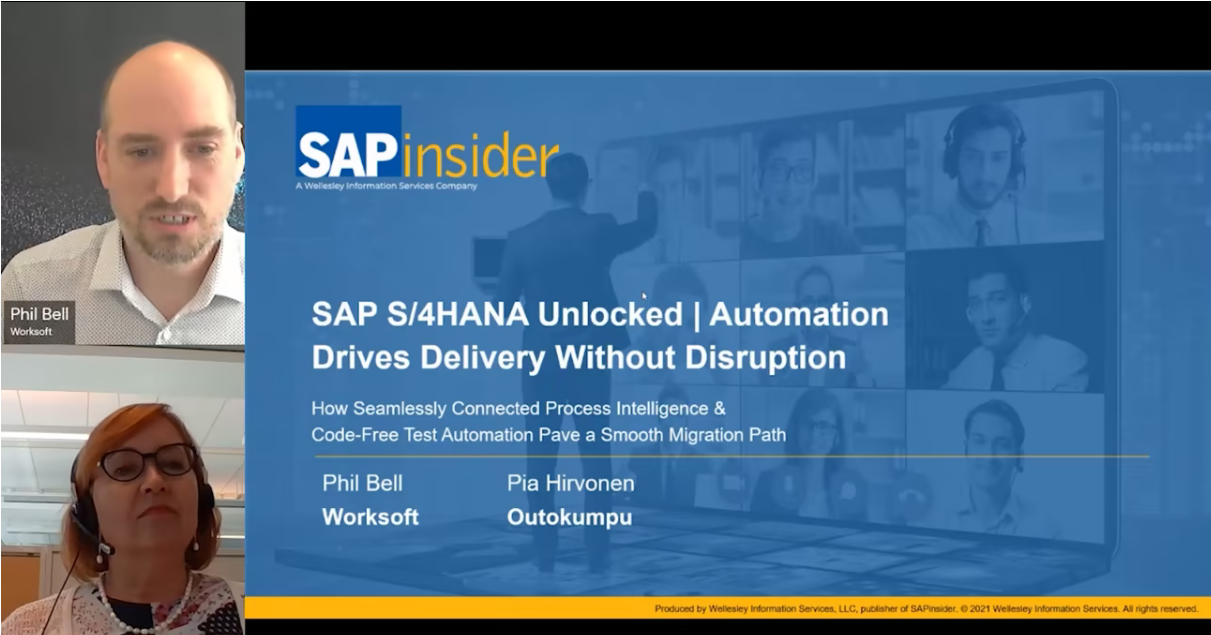Understand the basic process behind managing newsletters and different IT approaches supporting this process. Learn how to directly integrate newsletter management with SAP CRM 6.0 and 7.0, the limitations of this method, and how to use customization to overcome these issues.
Key Concept
Newsletter management involves promoting personalization of newsletters sent by companies, integrating their sending with other marketing activities in the company, complying with legal restrictions in sending marketing emails, and ensuring the performance of IT systems that support newsletter preparation and sending.
Newsletters are one of the oldest methods of Internet communication between companies and their customers and partners, and remain one of the most popular. In recent years their role and possibilities have changed significantly. This change is driven both by increasingly powerful IT systems and by stricter regulations regarding email advertising.
To meet these challenges, companies have adopted three main approaches to managing newsletter campaigns: outsourcing, dedicated mass-mailing systems, and integration into the main CRM system.
Of these approaches, integrating newsletter management directly into your SAP CRM system provides the best option for personalization and integration with other marketing campaigns. It also helps limit the duplication of customer data.
The Standard Newsletter Management Process
In order to better understand how SAP CRM can support newsletter management, it is important to understand the newsletter management process, shown in Figure 1.

Figure 1
Standard newsletter management process
To run any newsletter smoothly, you must manage its master data. In such a process you need:
- Newsletter master data. In the simplest scenario it can even be just a newsletter ID so that the assignment of a newsletter to a recipient is available. However, you can extend this to include characteristics such as newsletter language, employee responsible, target industry, and newsletter period.
- Recipient master data. The minimum required here from a technical point of view is the recipient’s email address. However, information about the recipient’s language, industry, and interests can also be useful.
- Connection between newsletter and recipient. If a company runs many newsletters that are sent out at regular intervals, it is useful to store information about the specific newsletters to which the recipient is subscribed.
- Functionality to deal with legal requirements. Most countries require you to store information proving that the recipient has agreed to receive your newsletter, including the exact date of the approval.
The connection between the newsletter and its recipient is then used as a basis for segmentation. Each newsletter is sent to a number of recipients, who are called the target group. It is very important to have tools that allow you to create such target groups very easily or even automatically. Otherwise you will waste your employees’ time and risk that newsletters will be sent to recipients who didn’t agree to receive any marketing content.
Of course, you also have to prepare the email content, including graphical layout, text, and pictures. Most newsletters are sent in HTML format, so the layout can be prepared in a plain-text program such as Notepad. The process becomes more complicated if you wish to include personalization options. Adding variables that are dynamically read from a database during email generation (such as customer name, price offer, or discounts) or inserting hyperlinks that allow for personalized tracking both require something more than a simple HTML editor.
The most difficult step in the whole process, however, is sending out the emails themselves. Problems can occur if your target groups are too large. When sending out massive amounts of emails, you need to consider:
- Efficiency of the sending process – how many emails per second are you able to send out?
- Impact that the sending process can have on the whole CRM system and company SMTP gateways – you must not block regular business correspondence.
- Being treated as spam provider. If this happens and your company domain is added to various “black lists,” it is crucial to react quickly, so that regular business correspondence is not affected.
For the newsletter management process to be effective, you also need to consider bounce management and link tracking. Bounce management refers to the automatic recognition and categorization of inbound emails sent as responses to your newsletter. They may be messages such as “Out of office” or problems with the email address (“Email address does not exist”), but they may also include true responses from customers, who clicked the Reply button in their email programs and are truly interested in buying your products.
Based on the requirements and resources available, each company should decide on a strategy for their IT systems to support newsletter management.
IT Support for Newsletter Management
Of the companies I have worked with so far, all were using one of three IT approaches to support the newsletter management process:
- Outsourcing
- Dedicated mass-mailing systems
- Integration into the main CRM system
The advantages and disadvantages of each are listed in Table 1.

Table 1
IT strategies for supporting newsletter management
Some companies decide to outsource the technical part of the newsletter management process. In this scenario, the master data management and segmentation steps are done inside the company. An external partner is responsible for preparing the email form (based on a received layout or directions), the sending process, and bounce management. As external partners have a lot of experience in and knowledge of sending emails, they are usually able to provide highly detailed reports, including such indicators as percentages of emails that were read, lists of incorrect email addresses, and lists of received responses. A company usually chooses this scenario when it does not want to invest in specialized IT infrastructure and software, or doesn’t want to hire employees with the skills necessary to manage the technical aspects of mass mailings.
In SAP CRM, this scenario is supported with the open channel functionality in campaign management, which can be used to export a list of newsletter recipients to a flat file. External List Management functionality can be used to import the results back to the SAP system.
Another approach is to use dedicated mass-mailing systems. They are able to support every step in the process, starting with master data management and ending with bounce processing. This way is used especially when the company is not running any CRM system, the CRM system has limited functionality, or the company can only use it in a limited way (a common example being when the maintenance and development of the CRM system is centralized and a subsidiary has specific requirements due to local regulations).
The last approach – and the focus of the rest of this article – is to integrate newsletter management into the company’s main SAP CRM system. This strategy requires the company to invest in IT infrastructure and the implementation of functionalities for supporting mass mailing. However, as a result, you can achieve business advantages in the form of:
- Better personalization options. When newsletter management is integrated into the CRM system, personalization can not only put the customer’s first name at the beginning of the email, but also can provide content and offers best suited to that customer, all according to information stored in the SAP CRM system. If the newsletter is created in the same system in which information about products, campaigns, prices, and discounts is stored, then such information can be accessed quite easily. For example, you could send a July newsletter with information about new summer products and prices, which are not only taken from the product catalog, but also include current customer discounts. Or you can integrate this July newsletter with one of your active campaigns and inform the customer that he or she can use the promotional code at the bottom of the newsletter to buy a set of products at a 5% discount during next 7 days.
Advanced personalization options include tracking how a customer reacts to your newsletter: Has he or she clicked on a hyperlink included in the newsletter? How many times? These options, of course, can only be used if they are legal in the country where your CRM is running. Complying with local regulations does not require separate newsletters. You can apply different personalization options to the same newsletter based on data in the customer master.
- Integration of newsletters into other marketing and sales activities. If newsletter sending is executed outside the SAP CRM system, information about such communication with the customer is not entered in the system. Integration of newsletters into the SAP CRM system makes each sending immediately visible in the customer card (and in reports). Sales representatives are thus aware that the customer is subscribed to the newsletter and has recently received one or two emails with a special offer. They can prepare better for the meeting and can avoid surprises such as the prices offered in the newsletter being lower than those offered directly by a sales representative.
- Single customer database. When using the main SAP CRM system, you are also using its database to store recipients’ master data, so there is only one IT system where information about customers is stored. You therefore do not have to worry about data synchronization (such as a change of email address) and are not risking that important information will be lost between the two systems. It’s especially important when complying with laws and regulations. Should the customer request not to receive any more marketing content, then you must ensure that his or her request is reflected in all systems.
Choosing the right strategy depends on many factors that vary from company to company. Nevertheless, it is safe to say that the more important the role the newsletter has in the company, the more sensible it is to integrate the process with the SAP CRM system.
Newsletter Management with SAP CRM
SAP CRM 6.0 and higher provide you with the functionality to support newsletter management in all the areas described in the previous section. Or more accurately, SAP CRM does not in fact provide any special newsletter functionality; you are merely using already existing tools to build a solution. Depending on company requirements, some of these tools can be used as provided in the standard SAP CRM solution and others can be enhanced or replaced by custom-developed functionalities. In Table 2, you can find a detailed description of tools used in the standard SAP process.

Table 2
Newsletter management with standard SAP
The advantage of using a standard SAP process for newsletter management is that you can implement it rapidly and at a low cost. All tools require only a small amount of configuration to make the process work:
- Define the attribute and attribute set representing company newsletters
- Assign this attribute set to business partners
- Prepare the data source (the simplest one – based on attribute set) and attribute list for segmentation
- Create a new mail form
- Set up a new campaign type for newsletter sending
- Use the standard communication medium Email
- Create and start the campaign with the mail form and target group assigned
Limitations When Using Standard SAP
When using a standard SAP CRM system, however, you need to be aware of some major limitations of the system when applied to newsletter management.
First of all, standard SAP does not provide any functionality for storing additional data about newsletters and subscriptions. The newsletter is represented by a marketing attribute and you are not able to enter information such as newsletter language, country, industry, or authorization group. This additional information becomes important if you are building a solution for an international company and you would like to offer your customers subscriptions for newsletters according to their country or industry.
An SAP system doesn’t provide any way for dealing with legal requirements regarding the sending of marketing emails. Companies are obliged to store information about a customer’s agreement to receive the newsletter. Even if after some time the customer unsubscribes from the newsletter, you must still keep the customer in the system, showing that he or she was subscribed in the past and you were allowed to send emails to him or her. Using marketing attributes as a solution to meet this requirement is nearly impossible.
Another problem is sending out emails. There is only one sending queue in SAP CRM and all the emails to be sent are placed in this single queue. Consider the following situation:
- You start a regular mailing campaign with 200 emails to be sent
- Shortly afterward, you start a newsletter campaign with 20,000 emails to be sent
- After the first two processes begin, the acceptance workflow for a special offer begins to send emails to the sales manager
Email from the acceptance workflow is sent only after all emails from the other two campaigns are processed. So as a result of sending a massive amount of emails, you should expect some delays in delivering regular email sent out by SAP.
The last limitation that I would like to describe is related to link tracking functionality. As mentioned in Table 2, link tracking uses Web Application Server ABAP to process all the clicks on hyperlinks sent in emails. Figure 2 shows the standard approach:

Figure 2
Link tracking process
Mail is sent out from SAP CRM via a mail server (Microsoft Exchange, IBM Lotus, or direct SMTP gateways) with a personalized link attached. The personalized link points to the ABAP server application responsible for counting clicks and redirecting to the actual target site. When any email receiver clicks on the link in his or her email, an application on the ABAP server is started. Such an approach is extremely risky and violates security policies, as it is easy to write an application that simulates such clicks in massive amounts, causing the Web server to work slowly or even crash. In the environments I have worked in so far, Web Application Server was not available from outside the company.
Possible Changes to a Standard SAP Approach
Many of the tools delivered by SAP CRM to support newsletter management can be used without any modifications. Segment builder, bounce management options, and integration into other marketing activities (campaign management and interaction objects) work smoothly and offer enough functionality even for large SAP CRM landscapes.
Given the issues with master data and link tracking mentioned above, however, I would suggest some adjustments to the standard process:
- Instead of marketing attributes, use business partner relationships to store data about newsletters and subscriptions. In this scenario each newsletter title is represented in the SAP system by a business partner of type Group. You can use the set of fields available for business partners in the system to provide information about the newsletter, such as language, employee responsible, country, and industry.
- Subscriptions to the newsletter are represented by a relationship created between a newsletter business partner and a recipient business partner (a contact person, for example). This solution has several advantages:
- It enables the storing of all necessary data about newsletters and subscriptions (including, as required by law, the dates when the subscription started and ended)
- All subscriptions are visible in the customer master card (in the Relationship section)
- In the newsletter master data you can see a list of all subscribers (Relationship section)
- You can manage authority for creating, changing and deleting the subscription just as you manage authority for standard relationships
One disadvantage of this proposal is that you create a large number of additional relationships in the system, which may affect system performance.
- Due to the security issues mentioned above, you cannot use standard link tracking functionality. To provide link tracking you should:
- Create your own application (using Java, Visual Basic, or another language) for counting the clicks and redirecting to the target site
- Create an interface for updating link statistics in the SAP system from your new application
- Modify the generation of personalized links in standard SAP so that they point not to the Web Application Server ABAP, but rather to the new application.
Marek Andrzejczak
Marek Andrzejczak is a senior SAP consultant specializing in SAP CRM and SAP SD. As a leading consultant he has taken part in several SAP CRM and SAP ERP implementations, including global template solutions. In this role, Marek helps to define and implement SAP CRM/SAP SD strategies for customers from the retail, FMCG, media, construction and food industries. Marek is an SAP-certified consultant in the areas of SAP CRM, SAP SD and ABAP.
You may contact the author at marek@marekandrzejczak.pl.
If you have comments about this article or publication, or would like to submit an article idea, please contact the editor.









